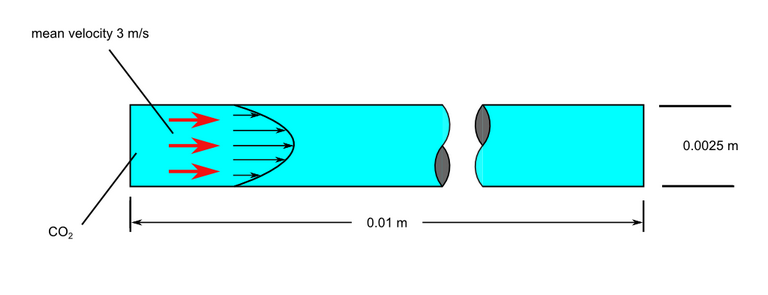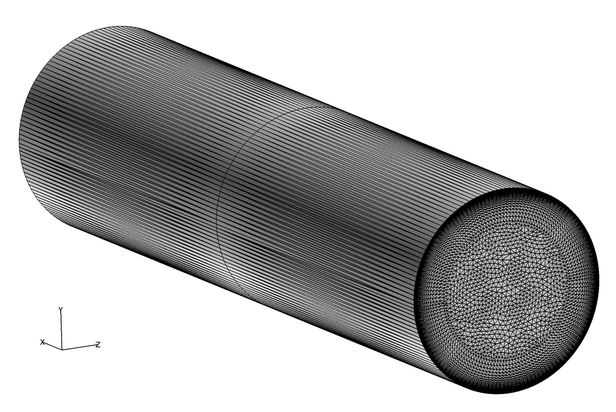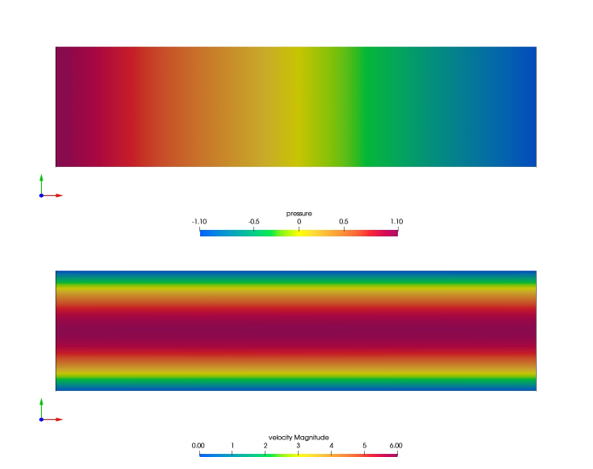Laminar Poiseuille Flow Through a Pipe
In this application, AcuSolve is used to simulate the flow of carbon dioxide (CO2) entering a pipe with a fixed velocity. AcuSolve results are compared with analytical results using the Hagen-Poiseuille approach as described in White (1991). The close agreement of AcuSolve results with analytical results validates the ability of AcuSolve to model cases with constant flow velocity.
Problem Description


AcuSolve Results

| Analytical pressure drop (Pa) | AcuSolve pressure drop (Pa) | Percent deviation from analytical | |
|---|---|---|---|
| Inlet to outlet pressure drop | 2.242 | 2.245 | 0.099 |
Summary
The AcuSolve solution compares well with analytical results for laminar flow through a pipe. In this application, the pressure drop along the length of the pipe is caused by the viscous shearing near the pipe wall. The AcuSolve steady state solution compares well with the analytical solution, with less than 0.1 percent error. The computation cost of the solution is reduced significantly due to the use of extruded elements in the streamwise direction and the fully established flow profile that is assigned.
Simulation Settings for Laminar Poiseuille Flow Through a Pipe
SimLab database file: <your working directory>\pipe_laminar\pipe_laminar.slb
Global
- Problem Description
- Flow Type - Steady State
- Turbulence - Laminar
- Auto Solution Strategy
- Relaxation factor - 0.2
- Material Model
- CO2
- Density 1.808 kg/m3
- Viscosity 1.46e-5 kg/m-sec
Model
- CO2
- Volumes
- Fluid
- Element Set
- Material Model - CO2
- Element Set
- Fluid
- Surfaces
- Inflow
- Simple Boundary Condition - (disabled to allow for periodic conditions to be set)
- Advanced Options
- Integrated Boundary Conditions
- Mass Flux
- Type - Constant
- Constant value - -2.6625e-05 kg/sec
- Mass Flux
- Integrated Boundary Conditions
- Outflow
- Simple Boundary Condition - (disabled to allow for periodic conditions to be set)
- Wall
- Simple Boundary Condition
- Type - Wall
- Simple Boundary Condition
- Inflow
- Periodics
- Periodic 1
- Individual Periodic BCs
- Velocity
- Type - Periodic
- Pressure
- Type - Single Unknown Offset
- Velocity
- Individual Periodic BCs
- Periodic 1
References
F. M. White. "Viscous Fluid Flow". Section 3-2.1. McGraw-Hill Book Co., Inc.. New York. 1991.